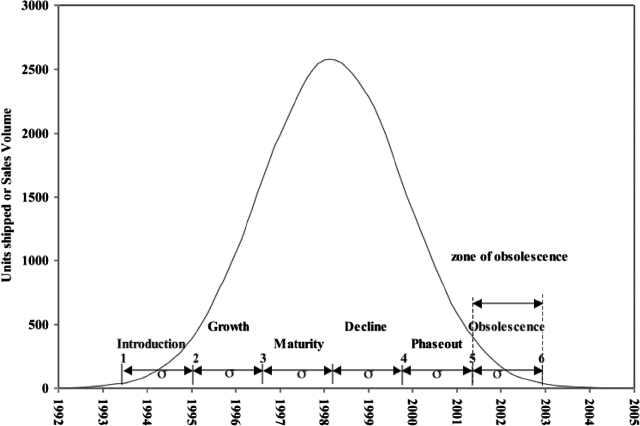3.1 PRODUCT LIFE CYCLE STAGES
Most electronic parts pass through several product life cycle stages corresponding to changes in part sales. Figure 3-2 (Pecht and Das, 2000) is a representative product life cycle curve of units shipped per unit of time, which depicts the six common part product life-cycle stages: introduction, growth, maturity, decline, phase-out, and obsolescence (also referred to as discontinuance) (Solomon, et al., 2000).1 The Electronic Industries Alliance published a similar product life cycle model in EIA-724: “Product Life-Cycle Data Model” (EIA-724, 1997).
FIGURE 3-2 A standardized product life cycle curve.

Product life cycle curve models are commonly used to describe the maturity of specific parts. For example, Freescale Semiconductor Inc. uses a more specific product life cycle stage model in which the stage “product introduction pending” has been added and the existing stage “growth” is divided into “product rapid growth” and “product stable growth.” Moreover, the stage “product last shipments” is inserted between the stages “discontinuance” and “obsolescence” (Freescale, 2010a). In order to provide a common basis, the product life cycle model shown in Table 3-1 and Figure 3-2 will be used in this book.
TABLE 3-1 Typical Product Life Cycle Characteristics for the Six Generic Stages of a Part’s Product Life Cycle
Product life cycle stages have played ...
Get Strategies to the Prediction, Mitigation and Management of Product Obsolescence now with the O’Reilly learning platform.
O’Reilly members experience books, live events, courses curated by job role, and more from O’Reilly and nearly 200 top publishers.

